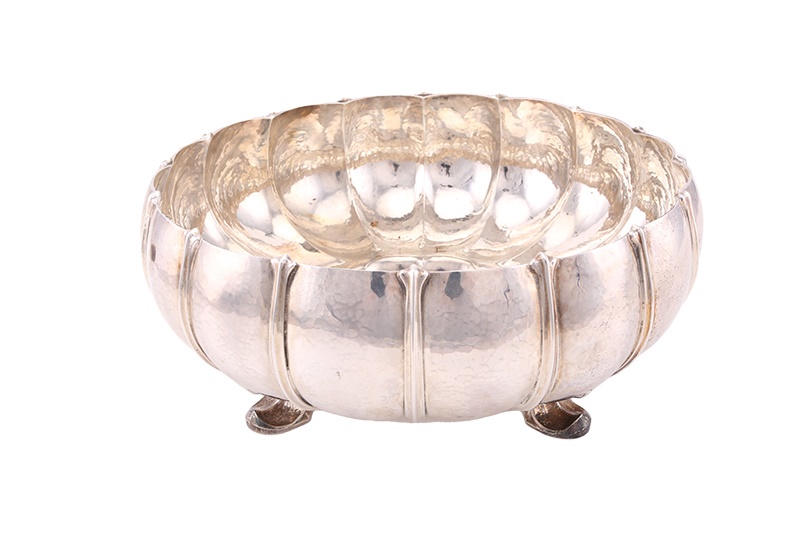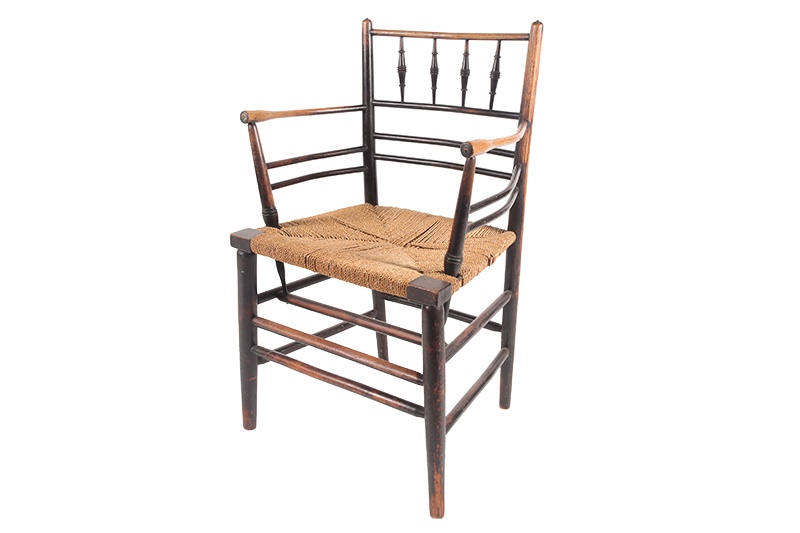Aesthetic Movement vs Arts and Crafts
Exploring the Contrasting Philosophies of Beauty and Utility in Design
28/04/2023
The Aesthetic Movement, and the Arts and Crafts Movement, are two distinct trends in art and design, that emerged during the 19th century. While they share a few similarities, they each had their own unique styles and philosophies. In Britain, in the 1840s, it became apparent that machine-dominated production was resulting in substandard goods and negative social conditions, but it took another 20-30 years, before steps were taken to rectify the issues.
The Aesthetic Movement, started in the 1860s, and was characterised by its emphasis on beauty for its own sake, “Art for Art's sake”. It sought to escape the ugliness of the Industrial Age, by creating beauty through art, producing objects that were pleasing to look at, with an emphasis on craftsmanship and quality materials, rather than utilitarian or educational. Inspired by a variety of cultures and periods, from Renaissance painting and Greek sculpture to East Asian art and design, artists of this period aimed to stimulate the senses and arouse the emotions of their viewers. This movement was heavily influenced by Dante Gabriel Rossetti and William Morris, who were followers of the ideas of John Ruskin.
A late 19th century Aesthetic Movement Japonesque carved walnut side cabinet
Ruskin championed the idea of “truth to nature” in his writings and argued that separating the act of designing from the act of making, was both socially and aesthetically damaging. Morris advocated returning to the values of the past, and the respect for craft in order to reform the decline of design standards brought on by the machine. Other famous artists and designers included Edward Burne-Jones, James McNeill Whistler, E.W. Godwin, and Christopher Dresser. The ostentatious writer and self-proclaimed “style-guru” Oscar Wilde, was one of the biggest advocates of the movement, often using the term “house beautiful” when referring to home interiors.
The Arts and Crafts movement, 1880s to 1920s, sought to preserve traditional craftsmanship in an age of mass production by focusing on handmade items with attention to detail and design. Inspired by the Aesthetic movement, and figures such as William Morris, the goal was to counteract the damaging effects of industrial production. There was a shift in society regarding the value attributed to how an item was made, and it influenced everything from the architecture of buildings down to pieces of jewellery. Structured more by a set of ideals than a prescriptive style, it was comprised of several different artistic societies, including the Exhibition Society and the Arts Workers Guild. Updated textbooks and literature, as well as progressive new art schools and technical colleges, encouraged the revival of techniques such as enamelling, embroidery and calligraphy within both workshops and individuals.
 A large Omar Ramsden Arts and Crafts silver bowl
A large Omar Ramsden Arts and Crafts silver bowl
Morris & Co., Heal's and Liberty were amongst the most recognised stores that facilitated and promoted the commercial distribution of the Arts and Crafts pieces to a wider audience. The Arts and Crafts community was open to the efforts of everyone, including women, which encouraged the involvement of both amateurs and students, resulting in some of the most significant designs of the era. There were several artists from the Aesthetic movement who were also contributors to the Arts and Crafts movement, such as Morris and Dresser, but other notable contributors included Gothic revivalist Augustus Pugin, William de Morgan, Philip Webb, Archibald Knox, Omar Ramsden, Edwin Lutyens, Charles Voysey, William Lethaby, Charles Robert Ashbee, Murrle Bennett & Co., Gustav Stickley, Walter Cave, Mackay Ballie-Scott, and William Benson.
A 19th-century arts and crafts "Sussex" open armchair
Both movements have had a profound influence on art, design, and architecture not just in the UK, but worldwide, with the Aesthetic movement setting the stage for 20th century art and design. They continue to be a source of inspiration for fashion designers, jewellery makers, interior designers, architects, and creative professionals to this day.
Murrle, Bennett & Co. An Arts and Crafts enamel pendant on chain
Do you have any decorative art that you are considering selling?
Please do get in touch with our team today. We would be delighted to provide you with a complimentary auction estimate.
Streaming live to over 10 million active bidders across the world, Dawsons bespoke international marketing will ensure you receive the best price for your decorative art.

-for-Linthorpe-pottery-a-pair-of-Aesthetic-Movement-vases-of-mushroom-form.jpg)

